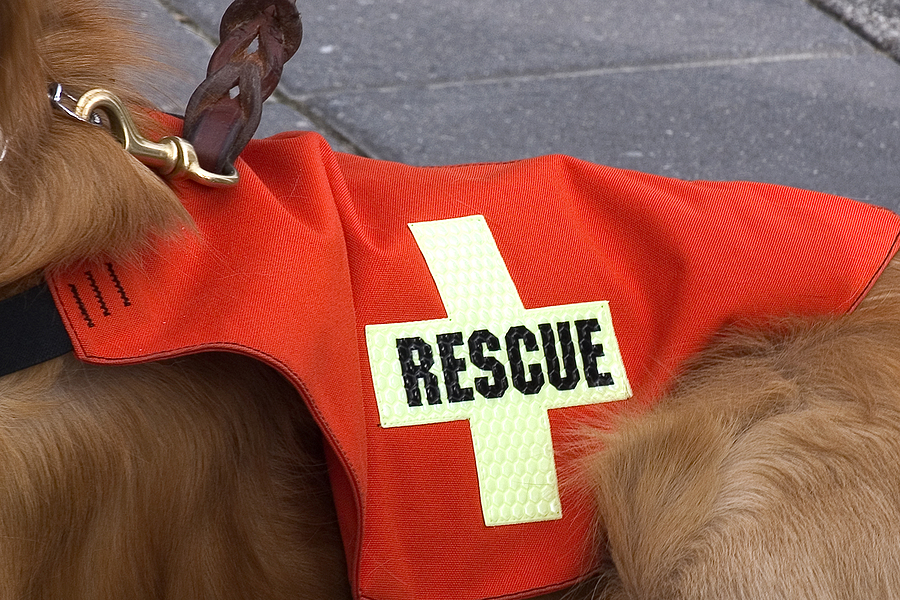Search and rescue dogs are vital members of search and rescue teams, and in many cases, they are largely responsible for the success of the mission. While the ability to search out someone who is injured or lost seems to come naturally to some dogs, search and rescue dog training is necessary before becoming a member of the team. There are various types of training dogs undergo for search and rescue, and some breeds are more successful than others.
Breeds Best Suited for Search and Rescue Training
While there may be good candidates in many different breeds, there are certain breeds that tend to excel at search and rescue training. Working breeds with strong sporting or herding characteristics typically make the best candidates. Trainers look for dogs that are intense when it comes to playing and capable of chasing and retrieving a ball for long periods without tiring or becoming distracted.
Although these traits are commonly found in German Shepherds, American Labrador Retrievers, Golden Retrievers, Bloodhounds, Border Collies, and Belgian Malinois, some mixed breeds that display that intensity and focus can also be successful in search and rescue dog training.

Types of Training
Successful search and rescue dogs must undergo extensive training before joining a search and rescue team. The most common types of search and rescue dog training are tracking, trailing, and open-air training. These help prepare the dog for various situations they may encounter while on a search and rescue mission.
Tracking/Trailing
Tracking and trailing are very similar and often combined into one training regimen.
Tracking is considered to be the first step in search and rescue dog training. To be successful, the dog must learn how to identify a particular human scent and then follow it. The dog must stay focused on the task at hand and not become distracted by other scents. This type of search is conducted with the dog on a leash and focused on following the footsteps of the person being tracked.
Trailing is similar to tracking training The dog is still on a leash, and an article from the missing person is provided to give the dog the scent to follow. However, the dog may also veer off the exact path of the missing person to surrounding areas and sniff the air to pick up the scent.
Open-Air Training
Open-air search and rescue dog training is conducted in large, open areas such as fields, woods, or parks. The dog must be able to search the area and find the missing person without an article to provide their specific scent. This type of search and rescue dog training is often used in cases where someone has been abducted or lost in a large area.
Specialized Search and Rescue Training
Those that excel in these basic types of search and rescue dog training often go on to more specialized training, which includes the following:
- Disaster Training – The dog is trained to find the scent of those injured and/or missing in damaged structures and areas affected by tornadoes, earthquakes, and other disasters.
- Cadaver Training – The dog is specifically trained to locate human remains.
- Water Search Training– The dog is trained to detect human scents in or under the water.
- Avalanche Training– The dog is trained to detect human scents under large amounts of snow. The snow may be 15 feet deep or more.

Professional Search and Rescue Dog Training
At Beau’s K9 Academy, we can evaluate your dog and determine if they are ready to undergo basic search and rescue training. This includes tracking/trailing and open-air training. It is a 13-week training course with an annual 1-week remedial training course. Dogs should begin the course when they are young or soon after ownership of the dog is acquired. We work with various search and rescue teams and volunteer organizations.
Not interested in training your dog for search and rescue? Just want them to be socialized and well-behaved? We offer training for that too – in-home and at our training facility for puppies and adult dogs. To get the best training for your pooch, contact us today!

